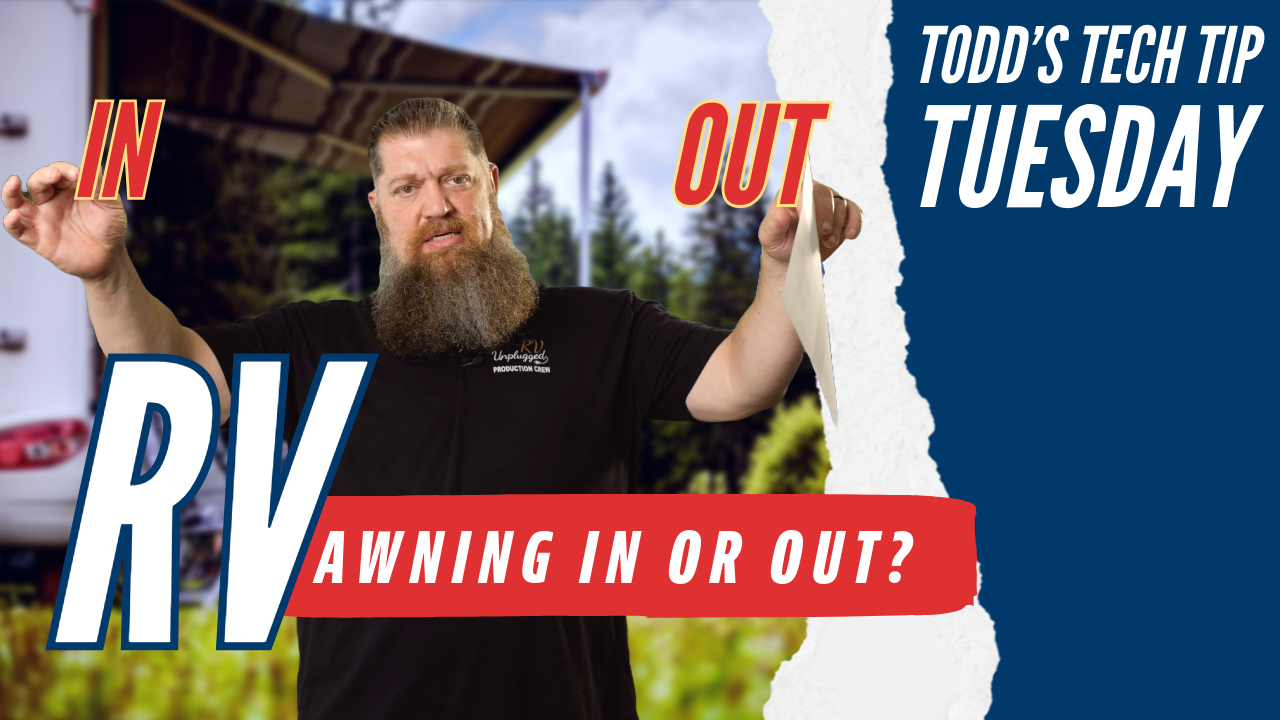Get your RV Technician Certification in as little as 5 weeks!

Welcome to another Todd’s Two-Minute Tech Tip Tuesday, brought to you by the National RV Training Academy—the largest hands-on RV training academy in America! Before we dive into today’s video, please hit the Subscribe button to stay updated on all our latest tech tips. Thank you for your support!
Exciting News: RV Unplugged Season 2
Before we get started, I have some exciting news to share. RV Unplugged Season 2 is premiering on May 29th, and we’ve been working hard to make it an incredible show. This season features a four-time Emmy award-winning production company, ensuring high-quality entertainment. Join us for a live watch party on YouTube, where you can chat with the cast during the first episode. Check out the trailer at the end of this video and find the link in the description. Now, let’s get back to our tech tip.
Addressing Windy Conditions and RV Awnings
The Question: To Tie Down or Not?
We received a question from one of our viewers, Robin Drew, asking about the safety and practicality of tying down electric awnings. Back in the day, tying down awnings was a big no-no, but opinions seem to be shifting. Let’s explore this topic in detail.
Understanding the Risks
Awnings are essentially large sails attached to the side of your RV. While they provide much-needed shade, they can be highly susceptible to wind damage. The common misconception is that awnings are secured to all the studs in the RV’s sidewall, but often they are not. Depending on the length and width of your RV, the awning might only be secured to the sidewall with special screws.
The Dangers of Tying Down Awnings
When wind gusts hit, your awning acts like a kite. If the wind force is too strong, it could potentially rip the awning off, causing damage to the sidewall of your RV. Ideally, the awning’s arms and the awning itself should fail before it damages your RV’s structure. Tying down your awning might seem like a good idea to prevent it from lifting, but it can create additional stress on the mounting points, leading to severe damage.
Evaluating Your Risk Level
Here are some factors to consider before deciding to tie down your awning:
- Weather Conditions: Constant wind or unexpected gusts can pose a significant threat. In regions like North Texas, where the jet stream brings strong gusts without warning, it’s crucial to be cautious. If you see a calm weather forecast but live in an area prone to sudden gusts, it’s safer to keep the awning retracted.
- Seasonal Changes: During transitional seasons like spring and autumn, wind patterns can be unpredictable. This is especially true during tornado season in the Midwest and South. In the peak summer months, if the weather is stable and windless, it might be safer to extend your awning.
- Location Awareness: Knowing your location and its weather patterns is key. If you’re in an area with frequent strong winds, it’s best to avoid using the awning. Conversely, if you’re in a region with consistent, mild breezes, using your awning might be less risky.
Practical Tips for Using Awnings in Windy Conditions
- Lowering the Front End: Some RVers lower the front end of their awning to reduce the sail effect. This can make it harder for the wind to lift the awning.
- Using Weights: Some people use weights to secure the bottom of the awning. However, even with weights, strong gusts can still cause damage.
- Check Local Practices: A good rule of thumb is to observe your surroundings. If other RVers in your area have their awnings retracted, it’s a sign that you should do the same.
Safety First: Tornado Precautions
Your RV is not a safe place during a tornado. Always have a plan for where to take shelter. Look for nearby storm shelters or solidly structured buildings. In case of a tornado warning, prioritize safety and leave your RV.
Conclusion
In summary, while tying down awnings might seem like a convenient solution, it comes with significant risks. Assess your location, weather conditions, and personal risk tolerance before making a decision. Always prioritize safety and be prepared to retract your awning if conditions become unfavorable.
Get Registered Today!
Talk to a student advisor to learn more!